The Namaqualand region of South Africa, where I now live has a unique charm and personality. It's a semi-arid region that is famous for its spring flower show which travellers from all over the world come to see.
Last year I missed the best of the flowers, I was a little bit late arriving from the UK. We haven't had real, ground-soaking rains yet this autumn. Winter rains will bring flowering aloe and later the Spring blooms. There are flowers now in the veld, I think that's due to the unusually warm weather that we're having, with daytime temperatures into the low 30's.
Last night on the way home we saw some yellow flowers next to the road: katstertjies [cat's tail asparagus]. I wanted to see these close up so took an early walk this morning. The sun was hardly over the horizon, but the bees were already busy.
“Life itself is a privilege but to live life to the fullest; well, that is a choice”, Andy Andrews.
We fixed roads and fences, fortunately it wasn't as hot as the previous day, only around 25°C. This is autumn, remember, what will the summer be like? The next day, Wednesday, was much the same, though we were hopeful to get the fences finished in a second camp so that we could use it for the sheep.
The internal farm fences, which separate the camps are relatively simple: five or six strands of wire held in place by fence posts and “droppers”. With time, the fence wires start sagging and the posts are damaged or degraded. The latter need replacing, the former tightening. “Droppers” are smaller posts that keep the wires between the posts in position, i.e. the sheep cannot push the wires apart.
Sheep are quite clever, I'm learning. They'll walk along a fence to find spots where they can escape to the next camp. Oom Toekie refers to these sheep as draadloopers [fence walkers]; more on oom Toekie in another story.
The sheep escape points need to be secured and are identified relatively easily. There are wool tags on the fence wires, which remove as they act as markers to other sheep. Wool fibers are quite tough, I've found out. The fence wiring at the “escape points” can be loose or there are large gaps between the wires; both need adjusting. Also, we can pack large stones or tyres under the bottom wire and can add wire “netting”.
Why would sheep want to escape you may ask? Well there are two reasons, to my understanding:
The veld [grazing] may be more nutritious in the other camp, the “grass is greener”;
The water is too brackish, salty, and the sheep don't like it. Therefore, the sheep may be trying to get to more palatable water?
On this farm we go to the veld, so to speak, usually Monday to Wednesday; the rest of the week are for household chores and family. I'll clean my cottage, do my washing, work in the garden. I'mstarting a vegetable patch, more learning there. My weekly shopping trip is at least 120 km, with three choices, namely Vredendal, Lutzville and Vanrhynsdorp. Each town has its intrigues and charms, it all depends on what I need to do. No more “on the way home” shopping and my coffee shop habits are also a thing of the past.
On Thursday, I meet Tani Yvonne, the Broodbak Tannie [the bread baking auntie]. She’s collecting wood for an outdoor oven that she uses for baking bread. Her son built the oven for her: “The bread doesn't taste right in an electric oven”, she tells me. We start chatting, I've baked bread a few times, never quite to my satisfaction. Tannie Yvonne makes her own starter, an “aartappel plantjie” [potato plant, which just have the right resonance] to make a soet-suur deeg [sweet-sour dough]. The starter consists of potato gratings and sugar in warm water, left overnight to “borrel” before adding flour. Sounds easy enough, I've tried three times. On kneading the dough, Tannie Yvonne says: “Jy moet knie tot jou hande skoon is” [you must knead the dough until your hands are clean].
Though I haven't got an aartappel plantjie started yet, I have made some “yeast bread”, including one on the coals. A little over-enthusiastic and not the nicest aesthetics; it tasted lekker, the important bit.
“People confuse me. Food doesn't.” ~ Anthony Bourdain
I'm a fairly adventurous eater. Bought some offal at a butcher's shop: trotters, skaapkop [sheeps head], and a few other bits and bobs. It takes a few hours of cooking, I like it. Except for the brains, I'm not eating that. Sheep can get scrapie, which is similar to “mad cows disease”, BSE [https://www.webmd.com/brain/mad-cow-disease-basics]
Sunday morning. I went for a walk in the veld with Sheila; she's a bit “nervous”, the walks seem to calm her down. On a koppie [hilltop], we pause to admire the view towards Vanrhynsdorp and the Knersvlakte. Te mooi!
On the way back, I spot a plant that I haven't seen before. I was a little confused, initially thinking that it may be a piece of wire, but no: It's a Koekemakranka (Gethylilis linearis), which is on the endangered red list for South African plants. It was used by early Cape colonists as a remedy for digestive ailments. (http://redlist.sanbi.org/species.php?species=2084-23)
Sunday afternoon is lui-lekker time.
“Do not grow old, no matter how long you live. Never cease to stand like curious children before the great mystery into which you were born.” ~ Albert Einstein




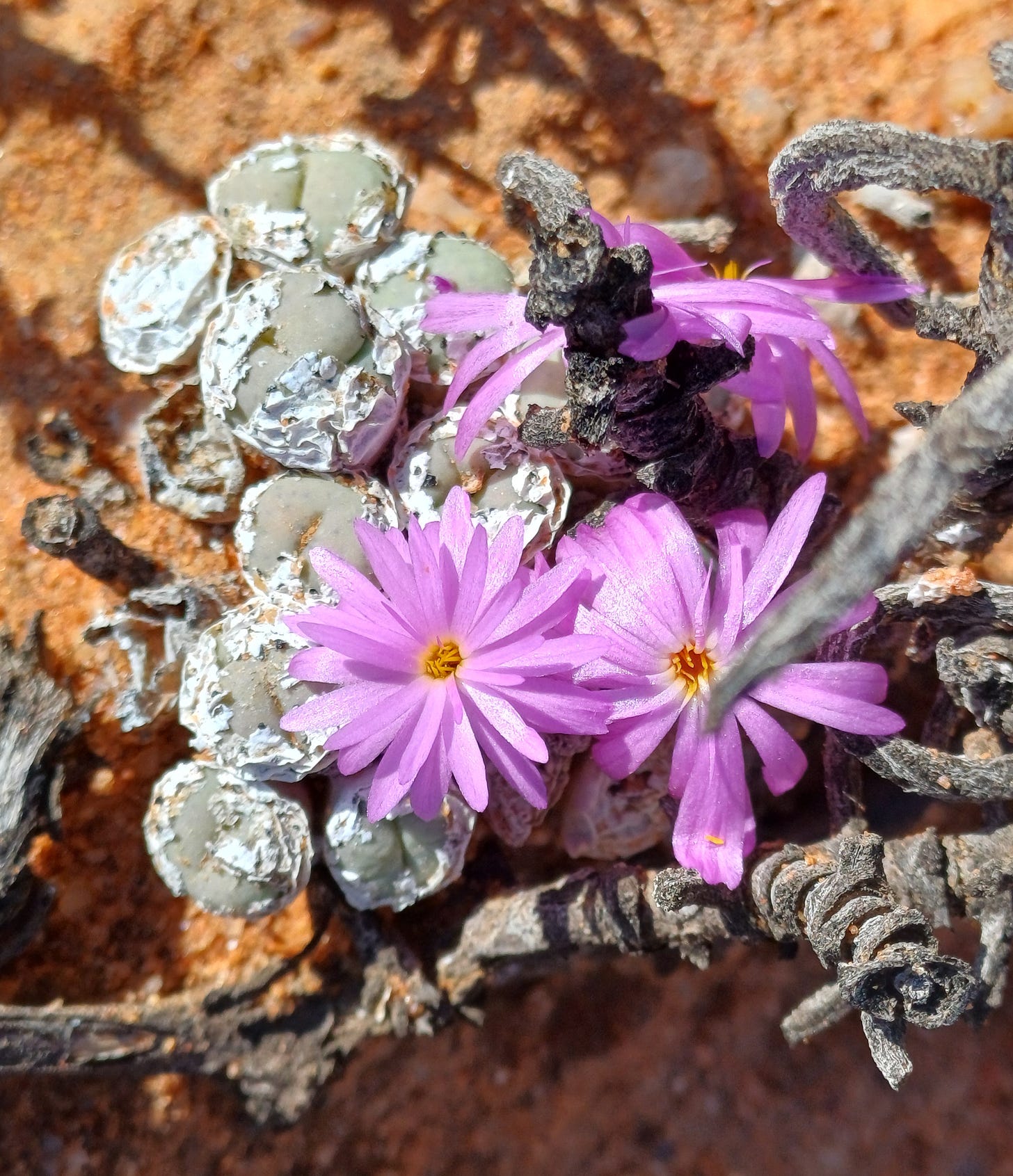
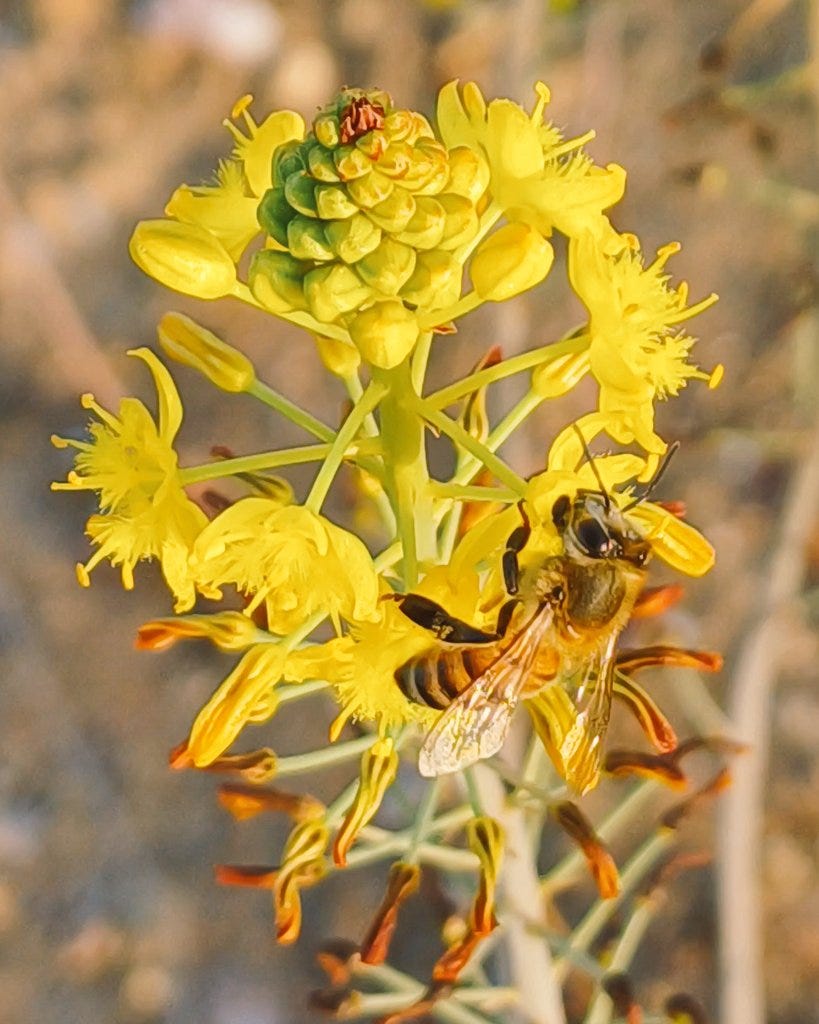


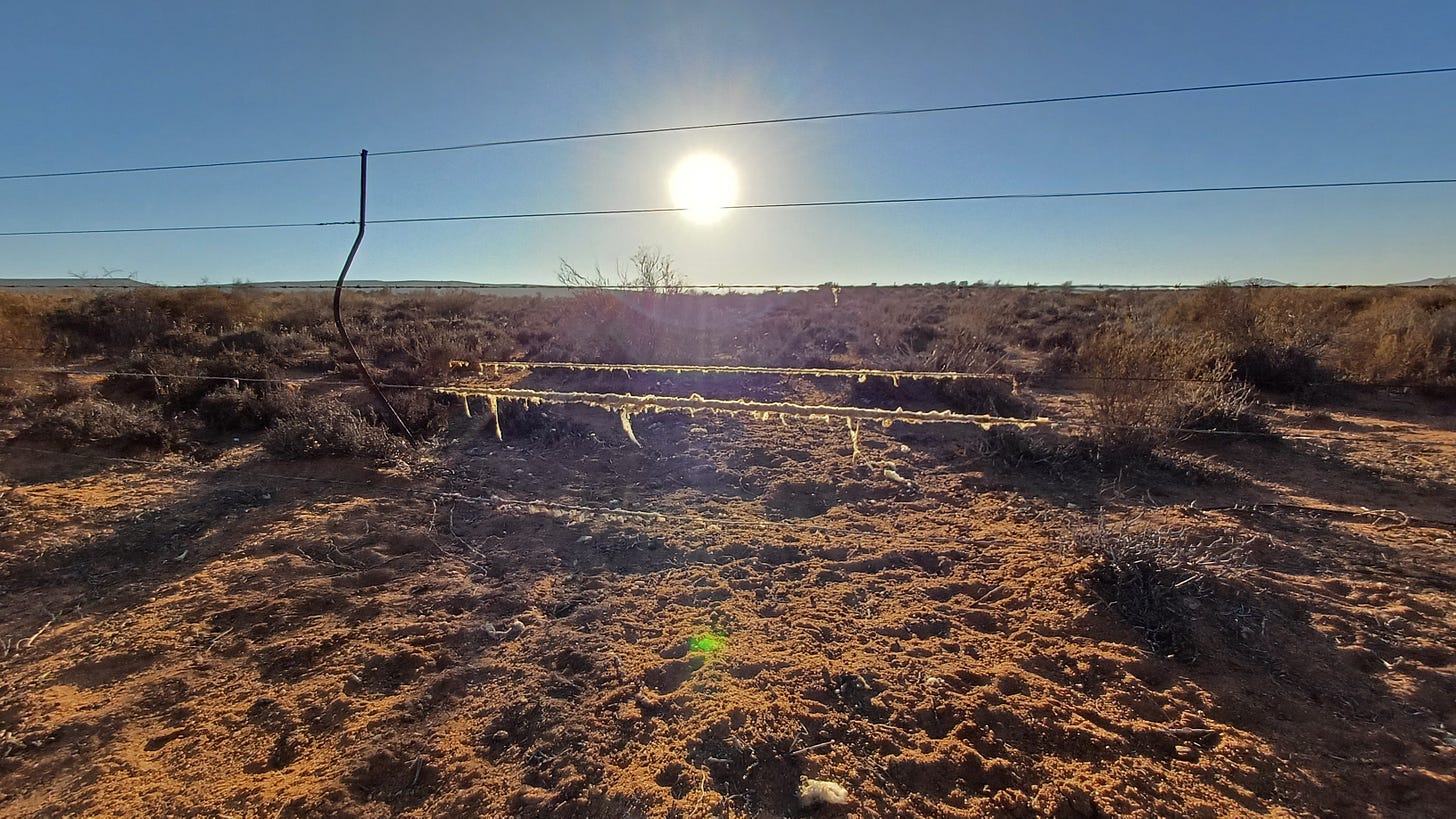
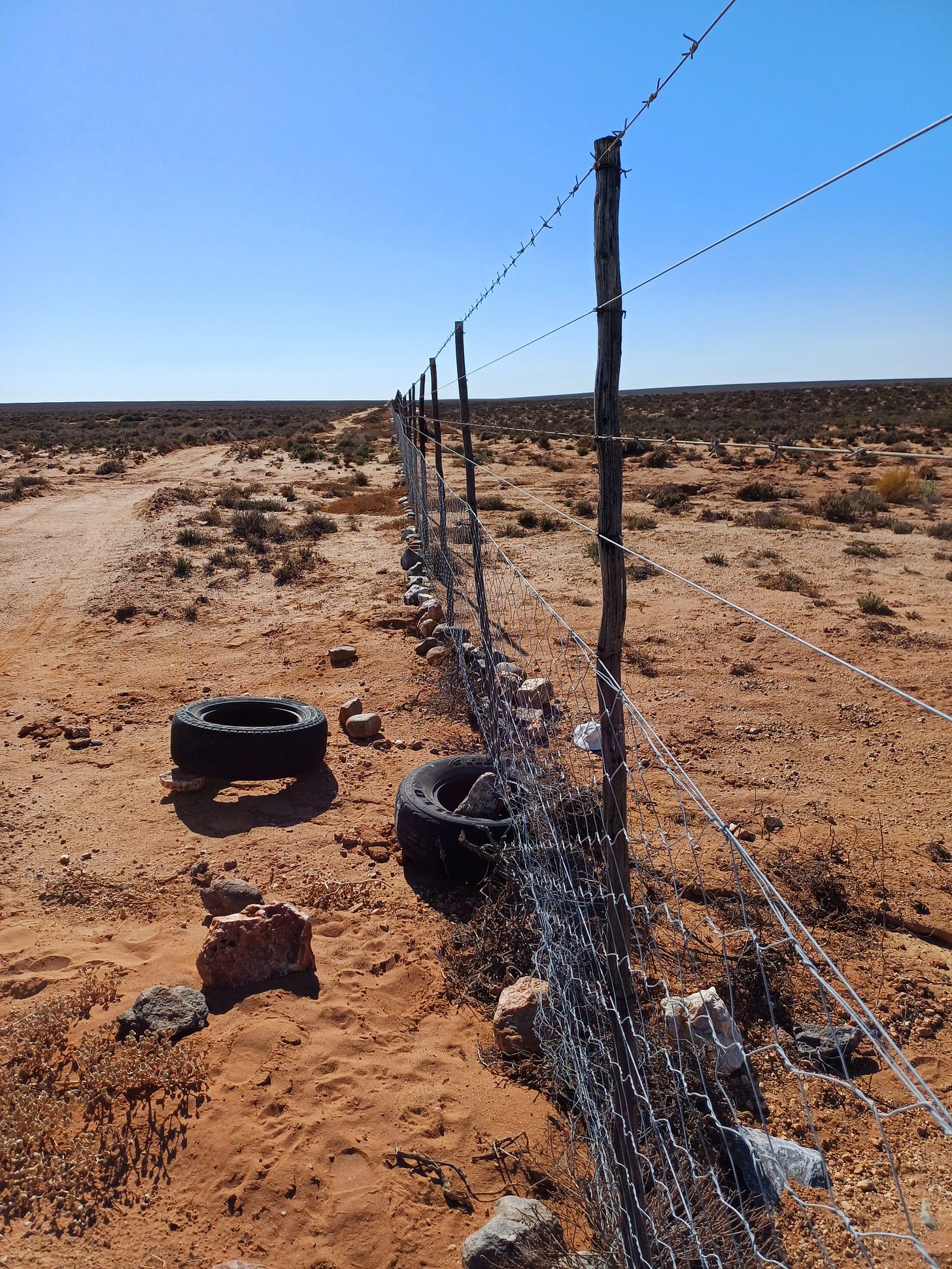


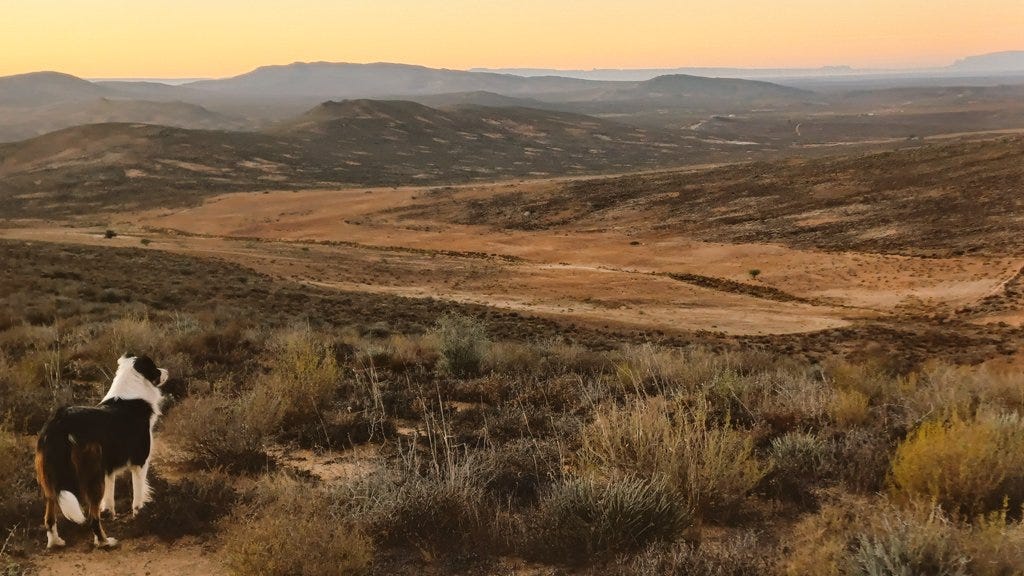
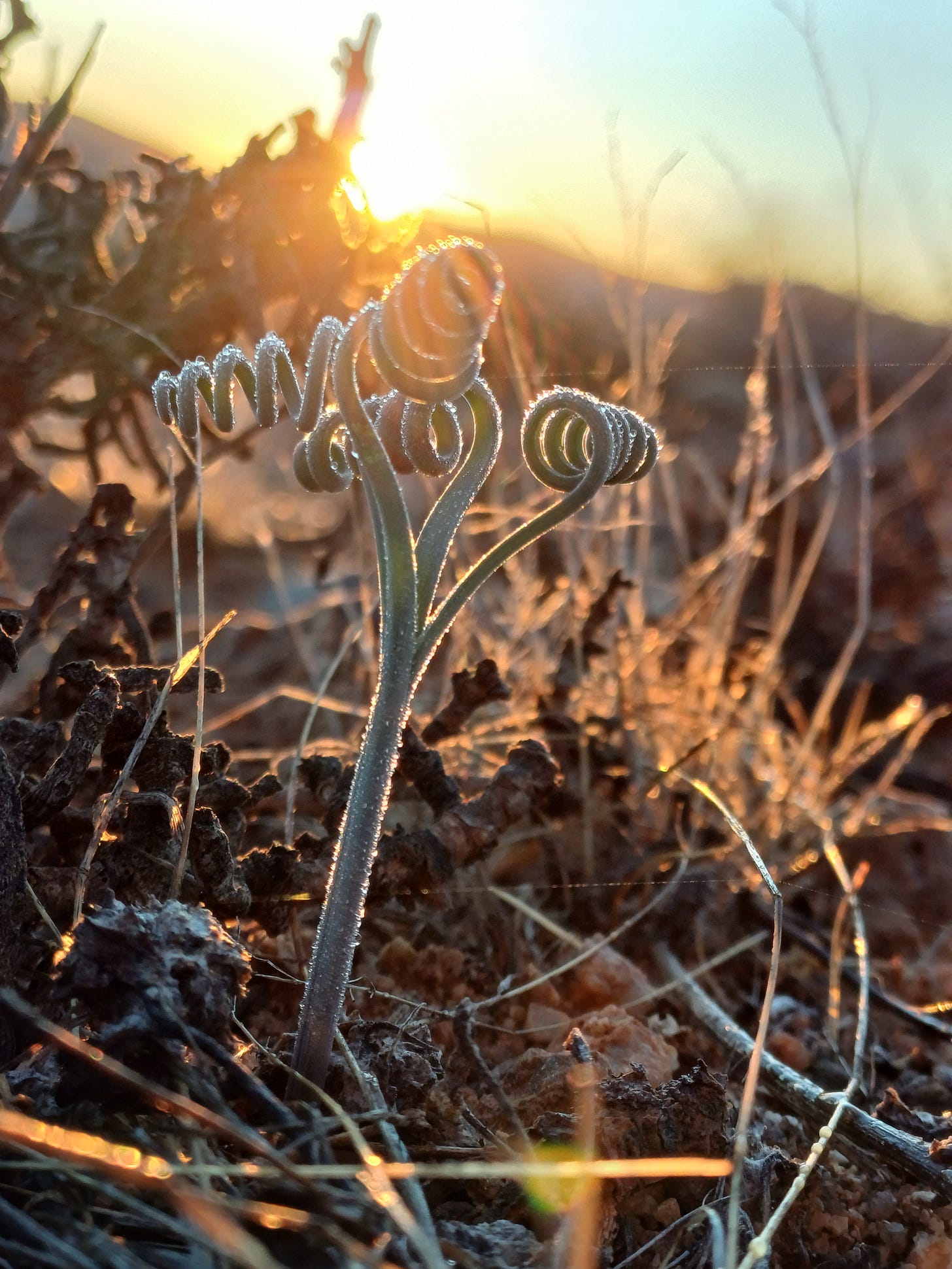
Die veld praat met 'n oop hart. -Hy lê net daar en wag vir die onvanklike hart om sy geheime te ontdek en te ontsluit.
Jy is bevoorreg.
Dicki, die veld praat 'n praat wat die mens nie gepraat kry in woorde nie.